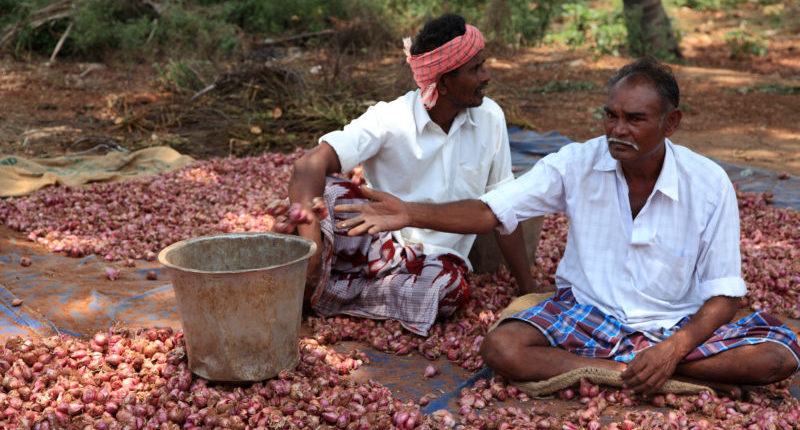A number of factors determine prices of commodities, not just their demand and supply. However, inflation is one aspect that directly impacts the price of commodities. Did you know that inflation resembles a hidden tax on the poor? It is because they own few assets to appreciate and hence are hit hardest when costs rise.
Inflation refers to persisting economic condition where the purchasing value of a currency falls. It can be measured by the difference between the price of essential commodities on two dates. Also, it can be indicated by variations in the consumer price index (CPI) between different periods.
The National Statistical Office (NSO) released India’s inflation data on 12 December 2019. The retail price based consumer inflation spiked to 5.54% in November 2019 as against 4.62% in the previous month.
Accordingly, there are numerous contributors to the inflationary situation, both domestic and international. However, there are key domestic conditions that further push inflation. One of them is the constant rise in food prices which is known as food inflation.
Food inflation is a branch of consumer inflation where there is an increase in the wholesale price index of the essential food items relative to general inflation. NSO’s report states that costlier vegetables, pulses and protein-rich items raised the CPI-based retail inflation to a 40-month high in November 2019.
Ask a consumer for the costliest vegetable this month. Pat comes the reply as ‘Onions’ and not ‘zucchini’. Onion prices have risen by over 400% since March 2019. Interestingly, twenty other essential food items also saw a price spike. These include rice, wheat, flour, oil, tea, milk, potato and tomato, but onions still seem to have won all the limelight! This year, onions are a significant contributor to food inflation.
Also Read: Small Businesses Capable of Doubling Farmers’ Income by 2022
Before jumping to conclusions, it is a fact to note that onion prices in India often spike during the south-west monsoon season due to crop failures and stockpiles rot. Incidentally, this season coincides with the significant harvest season of onions, which is March-May period, accounting to nearly 65% of the onion production during a fiscal year. The other two seasons of onion harvest are the January-March period taking away 20% share of the total output and the October-December period bagging the rest.
CARE Ratings listed some reasons for the steep hike in onion prices. Foremost, the harvest in Maharashtra was delayed by a prolonged monsoon. Maharashtra is one of the top onion producing states in the country accounting for over 35% of the crop, followed by Madhya Pradesh, Karnataka, Bihar and Rajasthan. They together contribute to more than 75% of the overall onion production in India.
Moving on to the next, the floods in several principle onion producing states such as Madhya Pradesh, Karnataka and Andhra Pradesh led to crop damage. Another reason stated by the institution was the fall in sowing area by at least 7% influenced by lower demand in the prior fiscal.
On 11 December 2019, former Chief Economic Advisor of India Arvind Subramanian presented his research-based analysis at the Bangalore International Centre. He opined that India’s current economic situation could be termed as the structural as well as a cyclical slowdown.
He emphasised that India’s current condition and chances of revival of the economy in the near future are not a macro-economic comedown looking at the GDP figures. Instead, the underlying indicators have had a more considerable influence such as the consumption, investments, exports and trade.
Hence, there is a three-tiered situation that triggered the onion price spike. First one is the flood havoc this fiscal year that was more than the usual. The next immediate one is the economic slowdown due to falling investments and exports. After that, the inherent menace that happens in every typical commodity market, i.e. stockpiling or hoarding in anticipation of price rise.
What lies ahead?
As far as the onion prices are concerned, we have the January-March Kharif season to make up for any losses due to crop failure in the October-December season. Prices will come down gradually with the passing time. As an immediate measure, the government has reduced the stock hoarding limit for onions to two tonnes from five tonnes for retail traders while that on wholesalers to 25 tonnes from 50 tonnes.
Further, onions have been imported from different countries to balance out the supply and demand stabilising the prices. To conclude, the onions prices are just one of the many contributors to inflation which in itself is a primary worrying concern.
For any clarifications/feedback on the topic, please contact the writer at annapoorna.m@cleartax.in
Annapoorna, popularly known as Anna, is an aspiring Chartered Accountant with a flair for GST. She spends most of her day Singing hymns to the tune of jee-es-tee! Well, not most of her day, just now and then.





